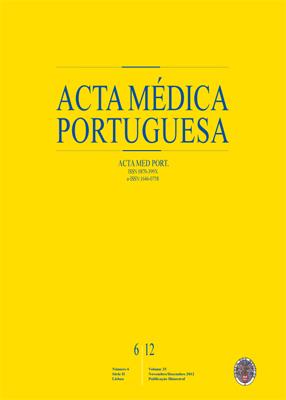Virtual Reality and Rehabilitation: Why or Why Not? A Systematic Literature Review
DOI:
https://doi.org/10.20344/amp.1358Abstract
Regardless of the health domain involved, the process of rehabilitation remains a challenge for professionals, patients and their families.In an attempt to overcome the limitations of traditional interventions, the technology of Virtual Reality (VR) has been increasinglyapplied to rehabilitation and begins to provide important tools which, however, generate debate and divergent positions.In order to examine VR’s contributions to the field of rehabilitation in terms of its advantages and limitations, this study presents asystematic review of scientific literature in this area and provides a hierarchical model describing and systematizing the nature of thestudies reviewed and their main subjects.The literature review focused on scientific papers indexed, until November 2010, in the ISI Web of Knowledge databases. Two independentresearchers analyzed the included papers in NVivo 9 and the developed model was applied to the recoding of the material. A totalof 963 articles were identified, of which 288 titles and abstracts were reviewed, after application of the exclusion criteria. The model indicates,as central categories in the literature: Type of Article (Empirical, Theoretical); Project Background; Type of Approach (AssistiveTechnology; Augmented Reality; Traditional Approaches; Virtual Reality). This last category (VR) was exhaustively decomposed so thatits applicability, effects and future trends could be documented. Results suggest that VR’s advantages include: its possible applicationto a variety of fields, cognitive functions, behaviors, neurological disorders and physical disabilities; its characteristics and respectiveconsequences; and its potential to overcome limitations of traditional interventions. On the side of the limitations, papers address: VR’sside effects, causes for the limitations, and suggested precautions. The results show promising trends in the use of VR technology inthe field of rehabilitation, with implications for its future implementation. Results further indicate the need for continuing research thatevaluates VR’s applicability to rehabilitation in general and (neuro)cognitive rehabilitation in particular.
Downloads
Downloads
Published
How to Cite
Issue
Section
License
All the articles published in the AMP are open access and comply with the requirements of funding agencies or academic institutions. The AMP is governed by the terms of the Creative Commons ‘Attribution – Non-Commercial Use - (CC-BY-NC)’ license, regarding the use by third parties.
It is the author’s responsibility to obtain approval for the reproduction of figures, tables, etc. from other publications.
Upon acceptance of an article for publication, the authors will be asked to complete the ICMJE “Copyright Liability and Copyright Sharing Statement “(http://www.actamedicaportuguesa.com/info/AMP-NormasPublicacao.pdf) and the “Declaration of Potential Conflicts of Interest” (http:// www.icmje.org/conflicts-of-interest). An e-mail will be sent to the corresponding author to acknowledge receipt of the manuscript.
After publication, the authors are authorised to make their articles available in repositories of their institutions of origin, as long as they always mention where they were published and according to the Creative Commons license.









